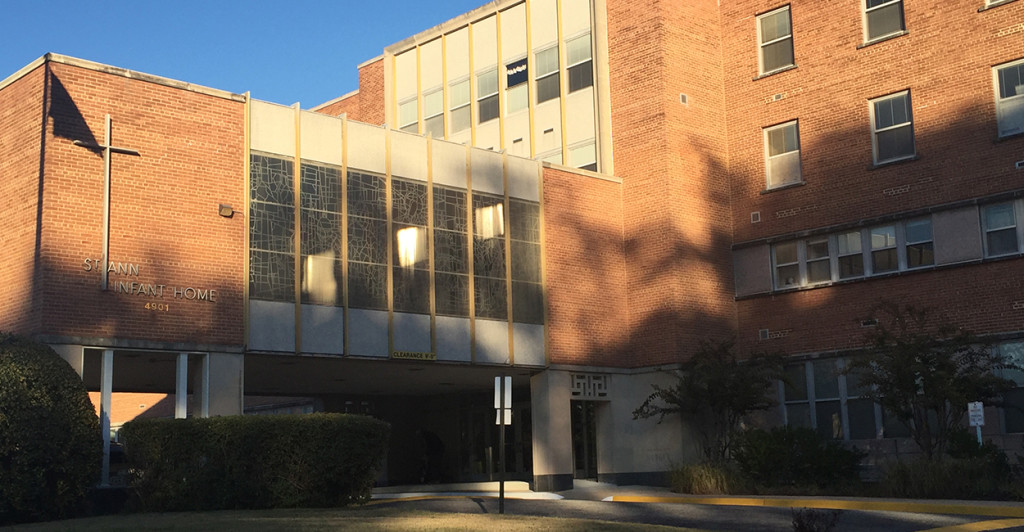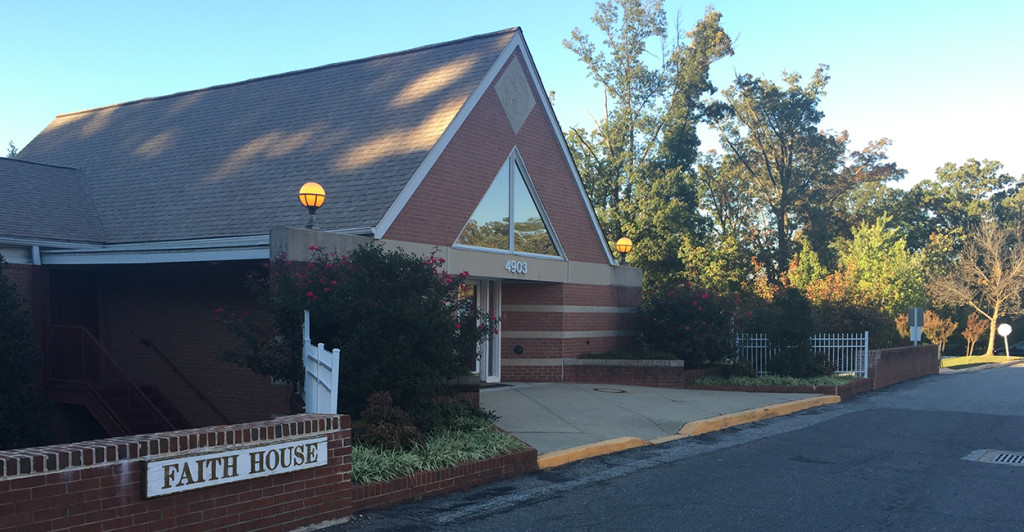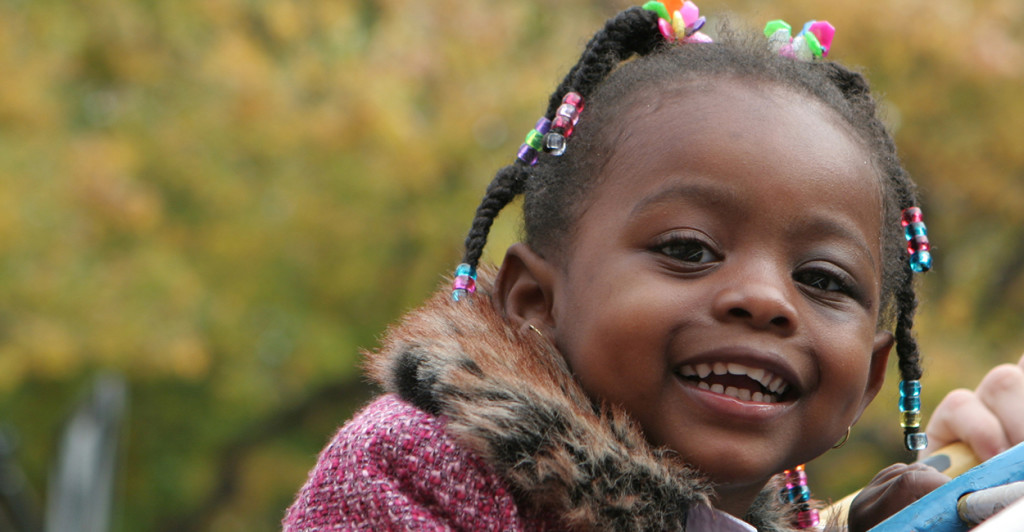Thanks to Abraham Lincoln, These Young Moms and Kids Have a Home
Madaline Donnelly /
HYATTSVILLE, MD—It’s 3 o’clock on a Monday in October, and Vianelly, a 19-year-old mother of two, is reflecting on the string of memories that led her to St. Ann’s Center for Children, Youth, and Families.
Her mother’s passing when she was six. Dropping out of high school. Two teenage pregnancies. Being kicked out of her grandmother’s house at 18, when she was eight months pregnant and caring for a one-year-old.
“I had got pregnant again with my son, and [my grandmother] kicked me out a month before I had him,” the young woman says matter-of-factly. “I almost got my son taken away from me because I didn’t have an address to put down [for them] to discharge [us to].”
In the end, the young mom did not have her son seized by Social Services, who placed her in a hotel briefly while she secured a room at St. Ann’s, a non-profit dedicated to providing housing for teen mothers along the Maryland-D.C. border.
“If it wasn’t for St. Ann’s, honestly, I wouldn’t have my son,” says Vianelly, who asked that her last name be omitted from publication. “That’s just my hardest thing. I wouldn’t have him.”

The outside of St. Ann’s still bears signage referring to its original name. (Photo: Madaline Donnelly/The Daily Signal)
An Institution for the ‘Maintenance and Support of Foundlings’
St. Ann’s has provided housing for women and children on the fringe of society since its inception in 1863 when, amid war and turmoil, Abraham Lincoln signed an Act of Congress incorporating St. Ann’s Infant Asylum, the home’s original name.
At the time, it was the area’s first home for unwed “indigent” mothers, according to the language of the act, as well as abandoned or orphaned children—a growing population as a result of tenuous wartime relationships.
The home, established by three women from the religious organization Daughters of Charity, operated out of a small building in war-torn Washington, D.C., before moving to its current location in Hyattsville in the 1960s.
Over the years, St. Ann’s has evolved, catering to changing societal needs. It has served as an asylum, an orphanage, and, in more modern times, a home for children in the foster care system. In 1949, ahead of its time, the home began offering daycare services for single working mothers, a service it still offers the community today.
“When I came here in 2005, we had 35 children here without their parents, anywhere from newborn up to age 12, boys and girls,” says St. Ann’s CEO, Sister Mary Bader. “Today, I’d say the most pressing piece of our mission is finding or providing housing with supports for young mothers and their children.”
The home currently houses 18 women and 20 children through its Teen Mother and Baby and Supportive and Transitional Housing programs. The teen mother program is free of charge and open to homeless women ages 13-21 who either are pregnant or have infants. The transitional program, which costs either $100 or $200 per month depending on income, offers housing and support services for young single-mother families.
This year, nine healthy babies have been born to mothers living at St. Ann’s. The women are ordered to live there by the courts, are in foster care, or come of their own volition.
“[These women] are coming from situations where there is no housing or it’s, they’re transient, and living from house to apartment to couch to program and so on and so forth, and there’s no stability,” Bader says. “[We seek to] provide that stability along with supports.”
‘A Possibility of Advancing’
For Vianelly, St. Ann’s offers not only housing, but also an opportunity to achieve independence. Each day, she wakes up at 5:30 a.m. to get her children ready for on-site daycare before heading to GED classes also held at St. Ann’s. She says she hopes to graduate 12th grade sometime next year.

St. Ann’s housing facility for single mothers, Faith House, often serves as a stepping stone to independence for the women who live there. (Photo: Madaline Donnelly/The Daily Signal)
The 19-year-old hopes to eventually work as a sonogram technician and help other women feel the joy she says she felt when she saw her baby for the first time.
“We can provide all the housing we want, but without the supports we offer, the possibility of advancing to independence is minimized,” Bader says.
Rashanna, a 24-year-old mother of one also living at St. Ann’s, credits the program with providing a healthy environment for her five-year-old son Marshawn. The mother and son were previously living in an apartment with 12 family members before landing at a transitional housing program in Greenbelt, Md. They moved to St. Ann’s in June after the young mother lost her job as a medical assistant.
“We’re considered homeless, living here, but I don’t feel like it,” she says. “It makes me want to be better, and do things I need to do so that I can be self-sufficient.”

One of two original copies of the congressional act incorporating St. Ann’s in 1863. (Photo: Madaline Donnelly/The Daily Signal)
In addition to housing, St. Ann’s provides Rashanna, who pays a monthly program fee of $200, with access to a job counselor who helps with résumé development and interviewing. She says that she had an interview with a major health provider roughly a week ago. Her goals for the next year include finding stable employment, saving money, and securing her own apartment.
“We have parenting classes, life skills classes, ranging from how to use a household appliance like a washing machine or dishwasher, because some of these families have never used them before, all the way up to financial literacy classes, where the women learn to create a budget, understand credit, open a bank account,” Bader says.
St. Ann’s, officially a corporation of the Catholic Archdiocese of Washington, also offers optional religious services, but Bader is careful to point out that the home has never been about proselytizing or converting the women who live there. She says many women also move in with a strong faith of their own already in place.
“All of these women come in with different levels of education, family, and employment histories, or no employment histories, and this is often so counter-cultural for them to be living in a situation where there is an expectation, there is structure, there’s stable resources available, and a schedule to life,” Bader says.
“But they are very strong, and teaching me quite a few things,” she adds. “Truly.”
(Editor’s Note: Writer Madaline Donnelly’s uncle is Thomas Borger, who is on the Board of Directors of St. Ann’s Center for Children, Youth, & Families. He was not interviewed for this story).

